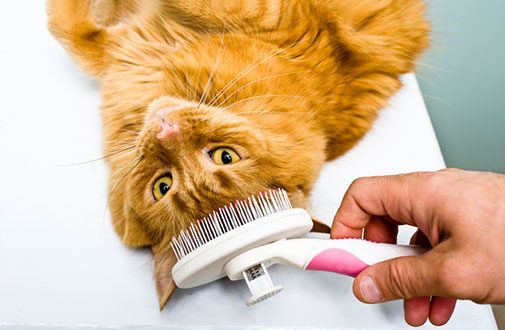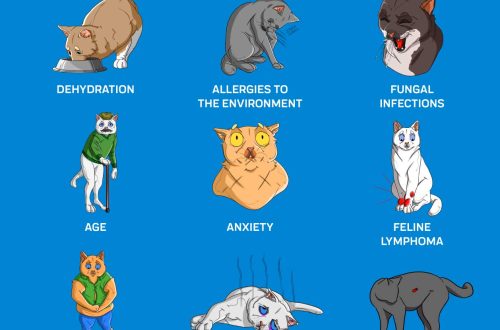
How to wash and comb a cat?
Domestic cats are extremely clean animals, but even the most meticulous cat will only benefit from additional brushing, especially if she has long hair. Also, brushing will help you bond with your pet. This is also a great opportunity to check the cat for any skin or coat problems.

It would be good to accustom a cat to combing and combing from a very early age. This will prevent tangles and help remove dead hair. Regular brushing at home will not only help keep your cat’s coat clean and healthy, but it will also prevent hairballs from forming.
How often?
If your cat is a long-haired breed, you should brush it once a day or at least twice a week. Shorthair cats need this procedure no more than once a week.
What you need.
Purchase specially designed grooming tools for longhaired cats or just a good brush and comb. If your cat is shorthaired, all you need is a brush recommended by your veterinarian.
Combing.
If the coat isn’t too tangled, just give it a good brushing. This will take five to fifteen minutes. Most cats enjoy being brushed, but if your cat doesn’t like the process, leave her and try again later. Sometimes in long-haired cats, the coat becomes tangled. If you notice matted hairballs, take the time for a thorough, patient brushing. Start combing right under the matted hairball to prevent pulling hairs. If the case is so advanced that you cannot handle it yourself, your pet will probably need professional grooming. It is also worth choosing the right nutrition for her, which will help reduce shedding.
Bathing.
Short-haired cats do not need to be bathed unless they are dirty and have allergies. But for longhaired breeds, occasional bathing will help keep the coat in good condition and prevent sebum buildup. Your veterinarian will be happy to tell you how to wash your cat and recommend a special shampoo.
Get ready for a swim.
Most indoor cats don’t really like water, but if you have shampoo and a towel handy, bathing can be quicker and easier. And to make it even easier, ask someone to help: one person can hold the cat while the other will wash it.
- First of all, carefully brush through the wool to get rid of tangles. This will help prevent them from being drawn in and compacted in the water.
- If you are bathing your cat in the bathtub, fill it with water before placing the animal in it. The less noise and movement during bathing, the better.
- Fill the bath so that the water reaches the cat’s belly. And don’t forget to check the temperature of the water – it shouldn’t be very hot. You don’t have to use the bathroom, a couple of basins are also quite suitable for this event. One can contain soapy water, and the other clean, for rinsing.
- When everything is ready in the bathroom, bring the cat in and close the door – you don’t want a soapy animal running around the house! You may want to plug your pet’s ears with cotton balls to keep water out. Then lower the cat into the water and soothe her with gentle words without interrupting the physical contact.
- Wet the coat gently with a cup or wet flannel, but don’t pour water on the cat’s head or try to submerge it.
- The cat may protest with heart-rending screams. Don’t worry, this is completely normal. And your cat is fine too, she’s just a little nervous.
- Gently lather the coat with shampoo, being especially careful around the areas around the muzzle, ears and eyes. After lathering, rinse the coat thoroughly, as the slightest residue of detergent can irritate the skin. If using a detachable shower head to rinse your pet, keep it close to his body to minimize noise and splashing.
Wrap in a towel.
Once the cat is out of the water, wrap it in a warm towel and gently blot the coat until it dries. If your pet has long hair, it is extremely important to be careful to avoid tangles and tangles. You won’t be able to dry your cat with a towel, so make sure she doesn’t run outside until she’s completely dry. And never be tempted to use a hair dryer, as the hot air can burn a cat’s delicate skin.
We cut the nails.
Domestic cats scratch to grind their claws, but they also need your help. Teach her to clip her nails from an early age, and as she gets older, it will be much easier for you. Ask your veterinarian to show you how to do this correctly, as well as which clippers are best to use.





